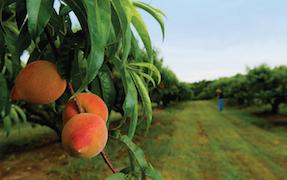“Ask the Plant and Pest Professor” is compiled from phone and email questions asked the Home and Garden Information Center (HGIC), part of University of Maryland Extension, an educational outreach of the University of Maryland.
Question #1: Will the recent cold weather affect planting dates for early spring vegetables? I am specifically asking about spinach and peas. I usually start them directly in the ground around the middle of March. If I should not be planting them at this time can you tell me how I will know when it is safe to put them in the ground?
Answer #1: We are coming to the end of a very cold, wet winter and because of this gardeners may need to be a little patient. Maryland gardeners learn over time that seasons vary from year to year and they should become familiar with the microclimates in their own gardens. For a large portion of the state it is still too early to be planting seeds in the ground. Soils are much too cold and wet which causes seeds to rot. Soil temperatures need to be about 45 degrees F before seeds should be planted. Air temperatures need to be in the 60 degree F range for at least a few days for this to happen. Also it is not advisable to work soil that is too wet. Press a small ball of soil in your hand. If it crumbles and breaks into smaller clumps the soil is workable but if it stays tight like a ball it is too wet and you need to wait until it dries out some. But do not fret we still have a long growing season ahead of us.
Question #2 I was looking to buy a peach tree or two for my yard this year. First, can peach trees grow and produce well in Maryland? Second, if they can, which ones do you recommend? I looked through some catalogs and there are so many to choose from. I am looking for one that produces peaches that I can eat fresh off the tree.
Answer #2: Peach trees are hardy in Maryland but they are one of the hardest tree fruits for a homeowner to grow. They are plagued by insect and disease problems, especially brown rot. The brown marmorated stink bug has also targeted Maryland peaches. The first year or so you could probably get away with not spraying the trees for pests and diseases but in following years a strict spray schedule needs to be followed. Our advice would be is to plant small fruits like berries and blueberries that can be grown organically. But if you have your heart set on fruit trees consider fig, Asian pear or sour cherries because they have fewer pest problems. Even so you probably will not get a consistent crop year after year. On our website look under ‘information library’ and then ‘publications’ for HG 68 Getting Started With Small Fruits and HG 69 Getting Started With Tree Fruits.
Question #3: We did not get a chance to do any lawn renovation in the fall. Last summer we had some yellow spots that have died out over the winter. Is there something we can do now to improve our lawn for this season?
Answer#3: The fall is the best time for major lawn renovation projects in Maryland. However, from your question it sounds like you just need to do some overseeding and filling in of bare spots. You should do this as soon as you can work the soil. It is best to seed in early spring, by mid-April. Before seeding rake away the dead grass to expose the soil. You can add a thin layer of topsoil or compost to the area and scratch it into the area. Seed with turf type tall fescue seed. This grass species grows best in Maryland’s climate. After seeding, tamp the seed down with the end of a metal rake. Cover with straw or a very light covering (you should be able to see the seeds) of topsoil or compost. The seeds should germinate in about two-three weeks.



Write a Letter to the Editor on this Article
We encourage readers to offer their point of view on this article by submitting the following form. Editing is sometimes necessary and is done at the discretion of the editorial staff.